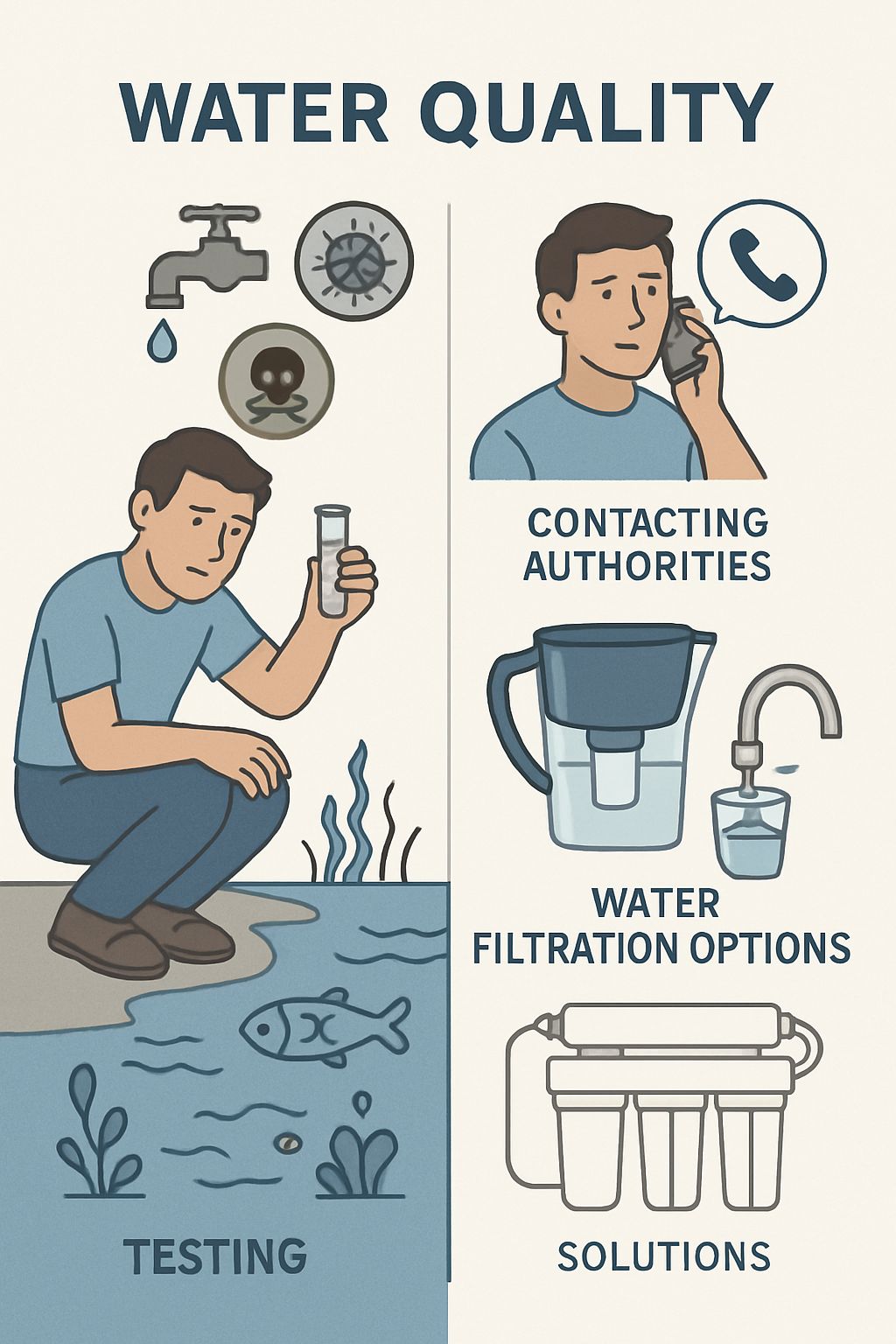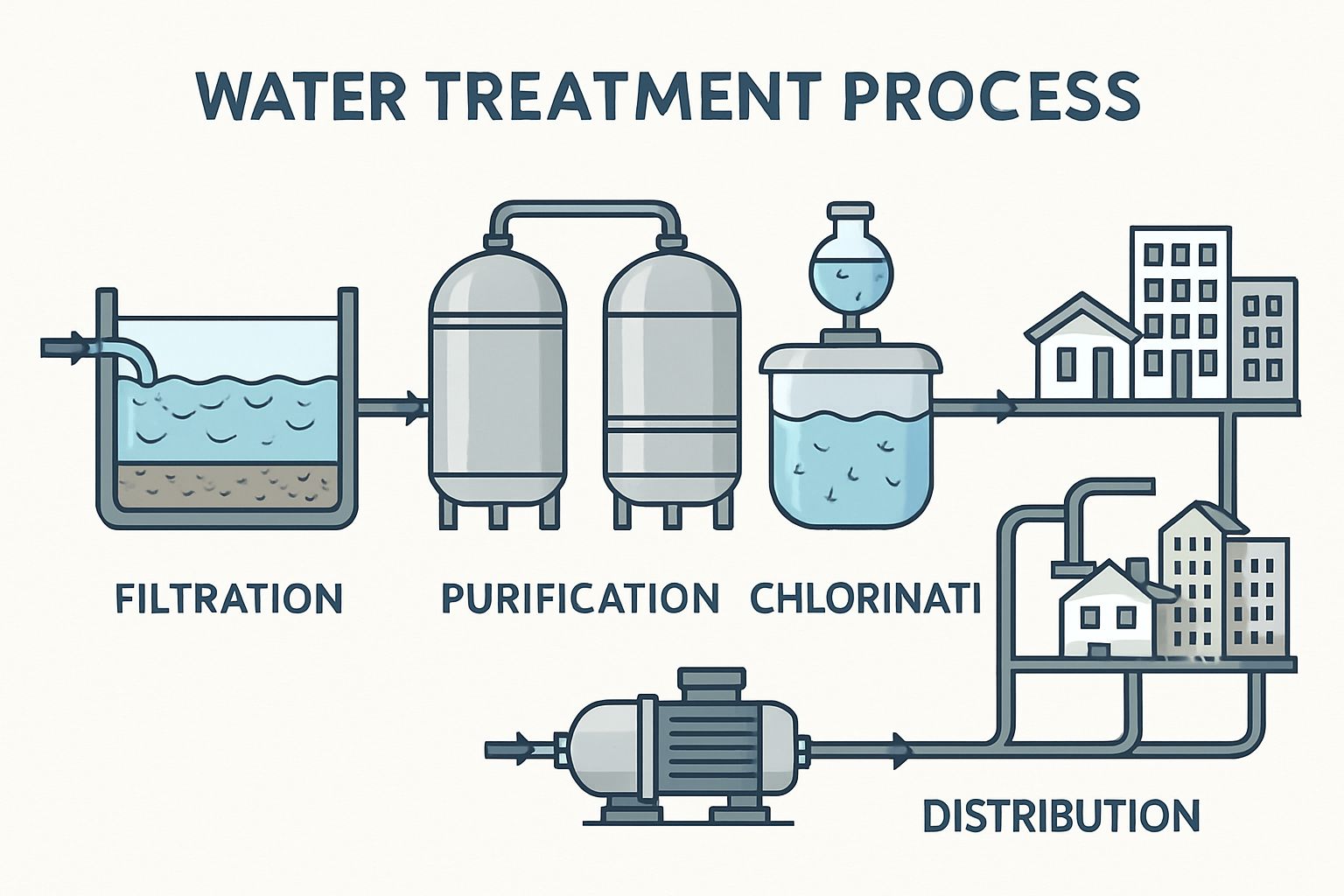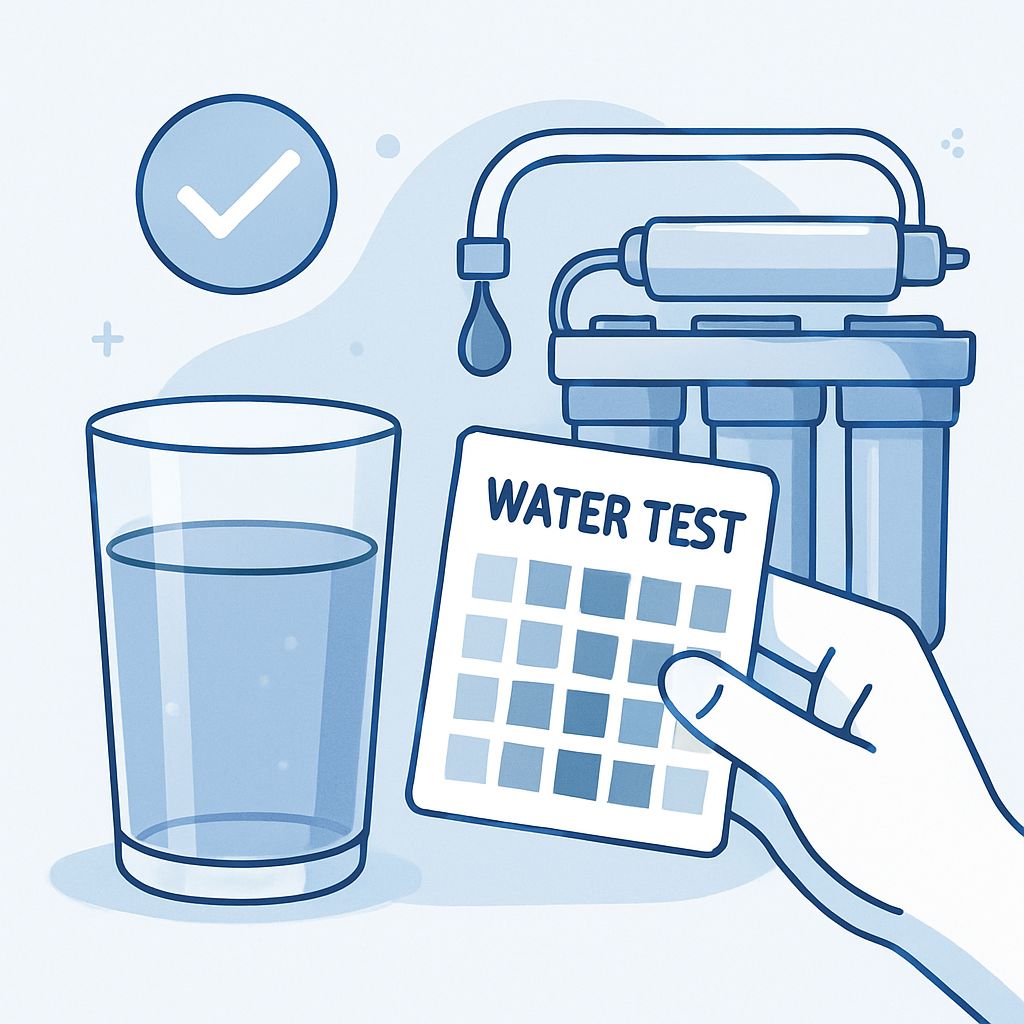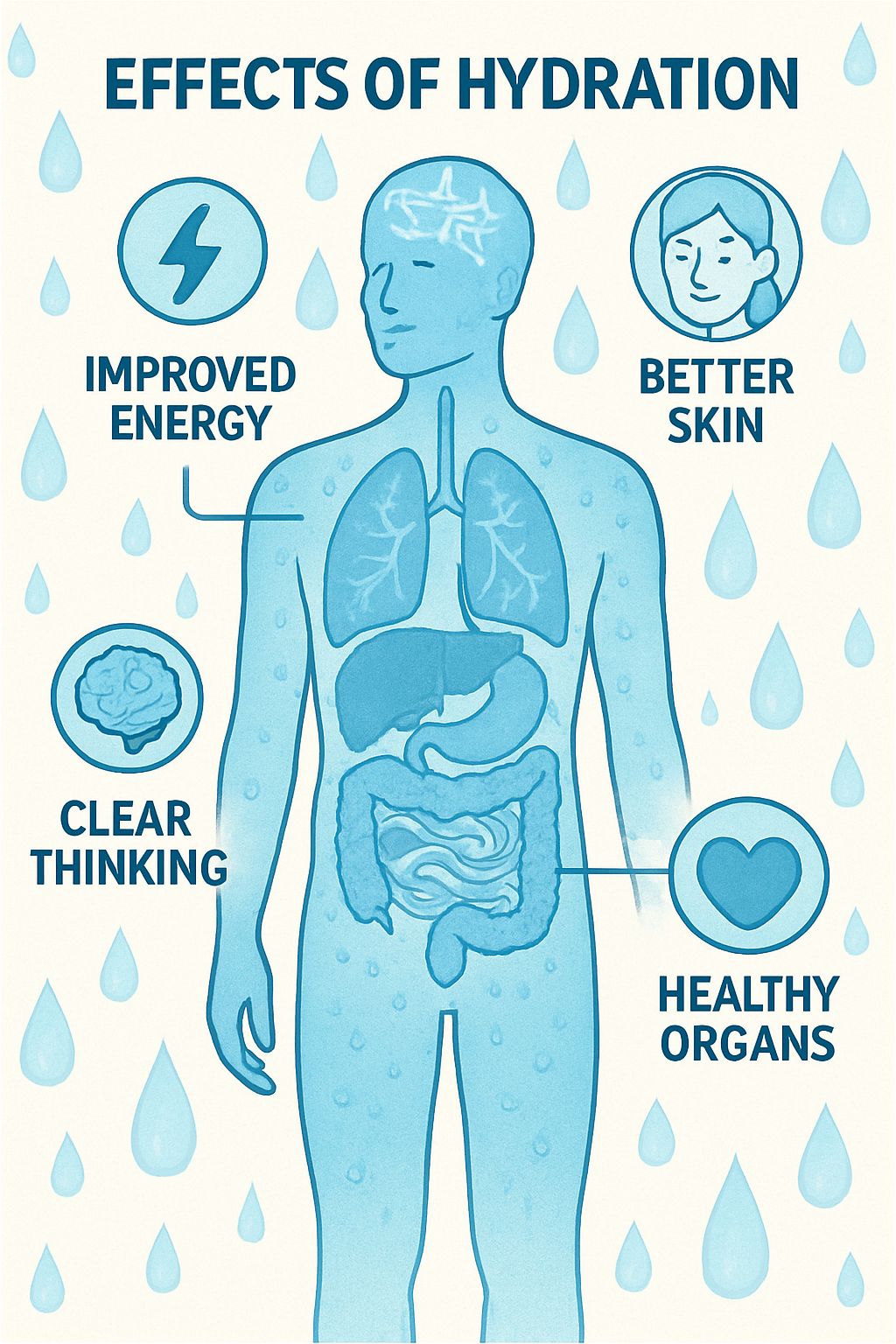
Water Treatment Process
Have you ever wondered what it takes to make the water from our rivers, dams, and groundwater safe to drink? The water treatment process is a fascinating and complex journey that involves multiple stages of purification. In Australia, we are fortunate to have robust and effective water treatment systems that deliver high-quality drinking water to our homes.
At the Australian Relief Organisation (ARO), we are in the business of water treatment, but on a much different scale. In the 30+ countries where we work, we are often building water treatment systems from the ground up, providing access to clean, safe water for the very first time. With over 205 water projects impacting more than 1 million people, we have seen firsthand the life-changing power of clean water.
This article will walk you through the typical water treatment process, from the source to your tap. It will also give you a glimpse into the innovative and life-saving water treatment solutions that ARO is implementing in communities around the world.
The Conventional Water Treatment Process
The water treatment process can vary depending on the source and quality of the raw water, but it typically involves the following key stages:
1. Coagulation and Flocculation
The first step in the treatment process is to remove the suspended particles, such as dirt, clay, and microorganisms, that can make the water cloudy. This is done by adding chemicals called coagulants to the water. These chemicals have a positive charge that neutralizes the negative charge of the suspended particles. This causes the particles to clump together to form larger, heavier particles called flocs.
2. Sedimentation
Once the flocs have formed, the water is moved to a sedimentation basin. Here, the water is allowed to sit for a period of time, allowing the heavy flocs to settle to the bottom. The settled flocs form a layer of sludge that is removed from the basin.
3. Filtration
After sedimentation, the water is passed through a series of filters to remove any remaining suspended particles. These filters are typically made of layers of sand, gravel, and charcoal. The water slowly trickles through these layers, and the filters trap the remaining impurities.
ARO’s Approach to Filtration: In many of the communities we serve, we use innovative filtration technologies that are appropriate for the local context. For example, we install biosand filters, which are simple, low-cost filters that use a layer of sand and a biological layer to remove pathogens and suspended solids. These filters can be built and maintained using locally available materials, making them a sustainable solution for remote communities. We have successfully implemented this technology in several villages in Cambodia, with remarkable results in reducing the incidence of waterborne diseases.
4. Disinfection
The final step in the treatment process is to disinfect the water to kill any remaining microorganisms. This is usually done by adding chlorine to the water. Chlorine is a highly effective disinfectant that can kill a wide range of bacteria, viruses, and other pathogens.
Advanced Water Treatment Processes
In some cases, additional treatment processes may be needed to remove specific contaminants from the water. These can include:
- Aeration: This involves mixing air with the water to remove dissolved gases, such as radon and hydrogen sulfide.
- Activated Carbon: This can be used to remove organic chemicals, pesticides, and taste and odor compounds.
- Reverse Osmosis: This is a process that uses a semi-permeable membrane to remove a wide range of contaminants, including salts, heavy metals, and microorganisms.
ARO’s Use of Advanced Technology: In areas where the water is heavily contaminated, such as in parts of Cambodia where arsenic levels are high, ARO utilizes more advanced treatment solutions. We have installed reverse osmosis systems that can effectively remove this harmful contaminant, providing safe drinking water for entire communities. These systems are more complex and require more maintenance, so we work closely with the community to provide training and support to ensure their long-term sustainability. The question of Is my tap water safe to drink? is one we strive to answer with a resounding ‘yes’ for all communities.
The ARO Difference: Sustainable and Community-Focused
While the principles of water treatment are universal, the way they are applied must be adapted to the local context. This is at the heart of ARO’s approach. We don’t believe in one-size-fits-all solutions. Instead, we work closely with communities to understand their specific needs and challenges.
Our water projects are designed to be:
- Sustainable: We use technologies that are appropriate for the local environment and can be maintained by the community.
- Community-Owned: We involve the community in every stage of the project, from planning and construction to management and maintenance.
- Integrated: Our water projects are often part of a larger program that includes hygiene education, sanitation, and other community development initiatives.
We believe that this integrated approach is the key to creating lasting change. By addressing the root causes of water insecurity, we can help communities to build a healthier, more prosperous future. The positive effects on the human body are numerous, as we discuss in What happens to my body when I drink more water?.
You Can Help Us Bring Clean Water to the World
The water treatment process is a testament to human ingenuity and our ability to solve complex challenges. But for millions of people around the world, this life-saving technology is still out of reach.
The Australian Relief Organisation is working to change this. With your support, we can continue to build and install water treatment systems in the communities that need them most.
Your donation can help us to:
- Drill a well and provide a community with a new source of water.
- Install a filtration system to protect a village from waterborne diseases.
- Train community members to manage and maintain their own water system.
Together, we can ensure that everyone has access to the clean, safe water they need to survive and thrive.
Support ARO’s Water Treatment Projects Today.
Frequently Asked Questions (FAQs)
Q: How does ARO choose the most appropriate water treatment technology for a particular community?
A: ARO conducts a thorough assessment of the local conditions, including the quality of the raw water, the availability of materials and expertise, and the cultural context. We then work with the community to select the technology that is most appropriate for their needs and circumstances.
Q: How long does it take to build a water project?
A: The time it takes to build a water project can vary depending on the size and complexity of the project. A simple biosand filter can be built in a few days, while a larger project, such as a deep well or a reverse osmosis system, can take several weeks or even months.
Q: How does ARO measure the impact of its water projects?
A: ARO uses a variety of indicators to measure the impact of our water projects, including the number of people served, the reduction in waterborne diseases, and the improvement in school attendance and economic activity. We also conduct regular follow-up visits to monitor the projects and collect feedback from the community. Recognizing the Signs You’re Not Drinking Enough Water is a global issue we are tackling one community at a time.
Q: What are the biggest challenges that ARO faces in its water projects?
A: The biggest challenges that we face in our water projects include the high cost of drilling wells and installing treatment systems, the logistical difficulties of working in remote areas, and the need to ensure the long-term sustainability of the projects. However, we are committed to overcoming these challenges and bringing clean water to as many people as possible.
Q: I have concerns about my own water. What should I do?
A: We have created a detailed guide for this very question. Please read our blog on What to Do If You Have Concerns About Your Water? to learn more.
Related Project: Clean Water



